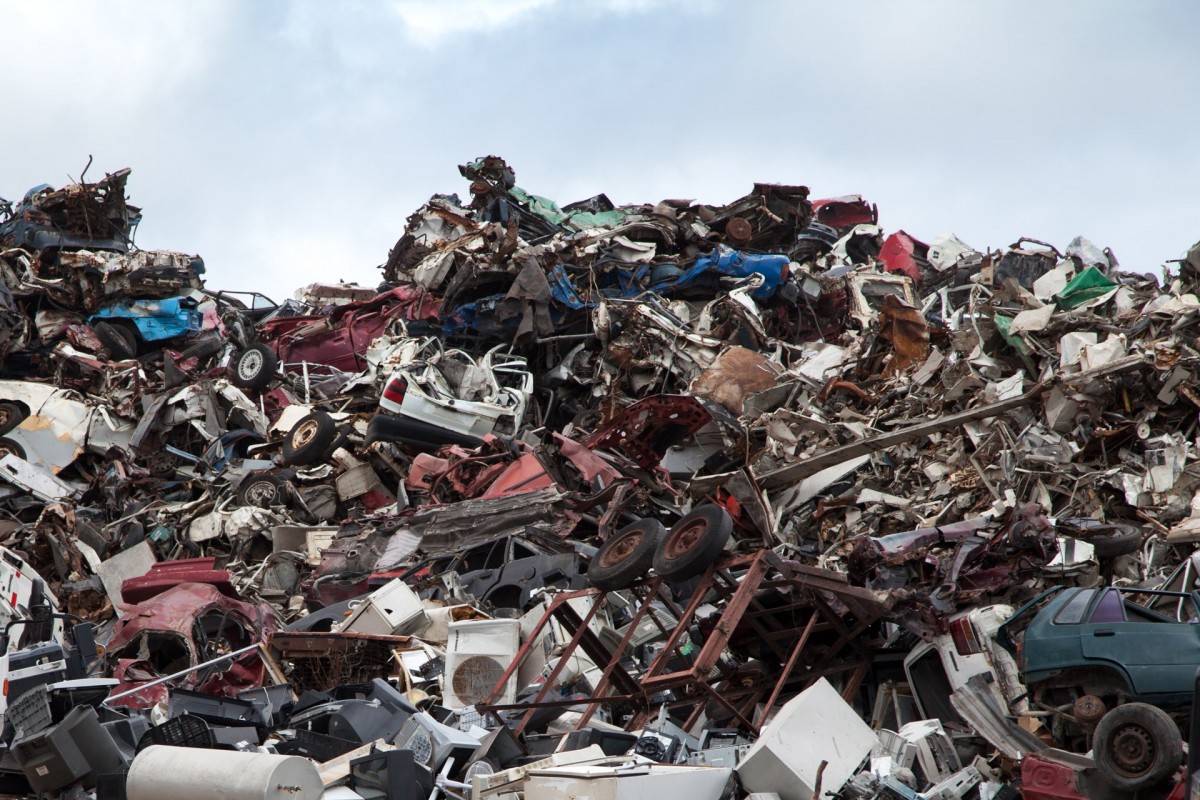The blue bins are for recycling; everyone knows that. Everything in those bins gets melted down and reused for manufacturing paper or plastics in the future. Except that this isn’t happening anymore. In Philadelphia, for example, the municipality is burning half of its recycling for energy rather than actually recycling it! Philadelphia isn’t alone. Towns and cities across the United States are foregoing their recycling obligations and resorting to landfills to dispose of all of their waste.
The sudden shift in recycling practices stems from a Chinese ban, beginning January 1st, 2018, on nearly all of its recycling imports, as well as the country’s demands for higher purification standards on other materials. Prior to this decision, China imported approximately two-thirds of the world’s recycling and thirty-one percent of the United States’ recycling. In the first quarter following the ban, U.S. scrap plastic exports to China fell by over ninety percent. Total exports of plastics to all countries dropped by forty percent. If China was profiting from importing waste in masses from the West (and this market is only growing), why the sudden shift in policy?
China’s ban had little to do with its ability to handle a high volume of recycled materials or the economic benefits of controlling the flow of recycling. Rather, the decision had to do with environmental concerns. Imported waste accounted for a whopping ten to thirteen percent of China’s domestic waste from 2010 to 2016. Between massive amounts of waste flowing off of China’s shores to a wealth of other environmental issues, China is currently grappling with, the country decided that the excess waste and fossil fuels produced from being the world’s recycling bin simply was not worth the costs anymore.
With The United States producing upwards of 260 million tons (and rising) of waste annually , this significant drop in waste exports has had serious consequences. Jeff Spross, a correspondent at The Week, described it aptly: “The average American may be motivated to put their stuff in the recycling bin by an urge to protect the environment. But whether a plastic bottle actually gets a new life depends not on our good intentions, but on something far less altruistic: market changes and business cycles.” Market changes are at play in full force. As the largest buyer, China, has disappeared, prices for recyclables has plummeted. Mixed paper, for one, has dropped from nearly $100 per ton to only $3. Given these lower prices, recycling companies are requiring municipalities to pay higher premiums, many of which are dropping services rather than gathering the funds to continue recycling.
Resorting to increasing landfills — burning waste for energy — is clearly not consequence-free either. Landfills are notorious for emitting dangerous levels of methane, a known contributor to global warming. Landfills are also beginning to raise prices due to increased demand. Hopefully, trash disposal remains at rates palatable to municipalities; otherwise, more serious waste-management overhaul will need to be explored. “Waste to energy” plants, too, are known to produce harmful toxins at rates on-par with coal plants. Unless something is done to correct market imbalances, the United States will suffer the consequences of these decisions for years to come.
There are a number of proposed solutions to reduce the effect of the ban, each of which presents unique challenges. The first and most straightforward idea is to raise prices for consumers – raise taxes – to continue existing recycling programs. However, the idea of raising taxes in the name of the environment is extremely unpopular. Other proposals include taxing producers of plastic waste (similar conceptually to a carbon tax) as means to incentivize recycling and provide money to build recycling infrastructure. While taxes may seem feasible in theory, for any of these proposals there is likely to be a advocacy group that could kill such a reform. Instead of raising taxes, another option to increase funds would be to cut other public programs, but this too would likely prove incredibly difficult and political suicide.
The best long-term proposal is to invest in domestic recycling infrastructure to reduce our dependence on foreign countries to manage our waste. China thrived as a recycling hub in part because of its cheap labor. U.S. companies cannot afford to pay pools of American workers to do the same job as their Chinese counterparts. Instead, domestic recycling would depend on smarter technology, such as automated machines that sort waste, prevent plastic bags from creating a blockage in the system, and alert the system when cardboard boxes have yet to be broken down. These innovations should be pursued, but they will undoubtedly take years to reach ubiquity.
Potentially, other countries with cheap labor pools could replace China as the world’s center of recycling. This is beginning to happen in India, Vietnam, and Indonesia. However, these countries cannot import the same volume of waste as China because they lack the manufacturing capacity.
There seems to be relatively little hope to repair U.S. recycling issues in the coming years. Drastically changing consumer habits, passing new waste-management legislation, and accelerating innovation will all prove to be slow and strenuous processes. Municipalities will likely continue to forgo their recycling plans and deal with the consequences of the Chinese ban for the foreseeable future.
Photo: “Junkyard Waste“
